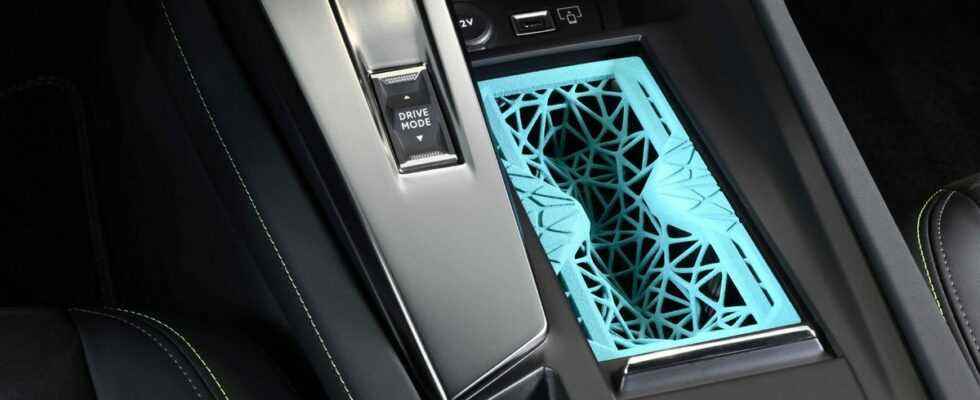In partnership with HP, Peugeot uses 3D printing to launch a new range of accessories for its 308. The possibilities offered by this technology are even greater.
3D printing is gradually making its way into the automotive industry. Peugeot is now using additive manufacturing for a new range of accessories for the latest 308, including a glasses holder, a can holder and a phone/card holder. The parts are printed with HP’s Multi Jet Fusion technology.
The choice of this method of production “offers new possibilities of aspects, colors, textures and obviously shape in terms of design”, explains Benoit Morin, colors and materials manager at Peugeot. It is also possible to offer new collections without having to launch new injection tools.
These accessories are intended for contemporary cars and Peugeot does not plan to retrofit its old models, with smartphone holders for example. For the moment, it is also not possible to personalize your accessory, but technology allows it and Peugeot is considering it.
Soon for mass production?
While some parts are already 3D printed for mass car production, this technology has not yet become widespread. However, it shows great promise with many advantages over traditional injection technologies, such as injection molding: “Much less constraints, a possibility of significant complexity, flexibility in manufacturing”explains Stéphane Ravassard, materials and process expert at Stellantis.
However, the development of 3D printing is for the moment still slowed down by high costs and Peugeot is not advancing on a deadline before a possible democratization of this process for mass production.
After-sales benefits
In addition to the areas of accessories and gradually mass production, 3D printing could bring a lot to the aftermarket. For a used vehicle that is no longer produced, supplying 3D printed spare parts makes it possible to produce only the quantity needed. “We are not constrained by a notion of volumes which, somewhere, are associated with an injection tool”, explains Benoit Morin. With injection, “there may be damaged tooling, there may be the need to produce 1000 parts when we only need one”emphasizes Stéphane Ravassard, which is not the case with 3D printing.
It is therefore not necessary to produce and store a large quantity of parts thanks to on-demand production. Manufacturing times are less, on the order of a few hours, and parts can be printed from almost anywhere.
A preferable environmental balance sheet?
The accessories offered by Peugeot are printed in thermoplastic polyurethane (TPU) Ultrasint. The use of even more easily recyclable materials is studied. For the moment, the environmental balance of these 3D printed accessories is better than that of traditional parts, according to Peugeot.
This comparison is to be made on a case-by-case basis and depends a lot on the tools. There is no need to produce molds for 3D printed parts. “There are machines behind, of course, but which tomorrow can be used to produce other parts for a competitor or another sector of activity”, demonstrates Benoit Morin. With 3D printing, “we are just necessary: produce the quantities we need without going to make molds”. Finally, the parts can be hollowed out. They are then lighter and require less material.
